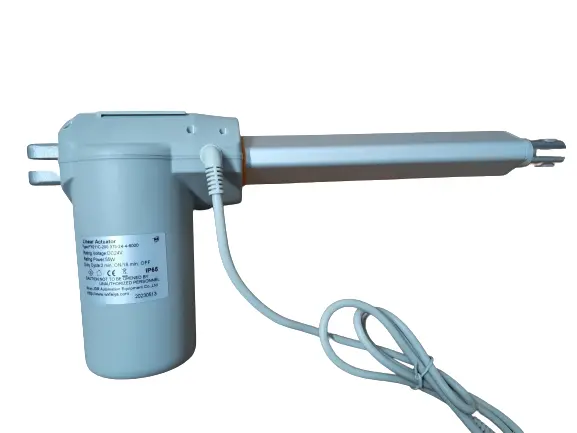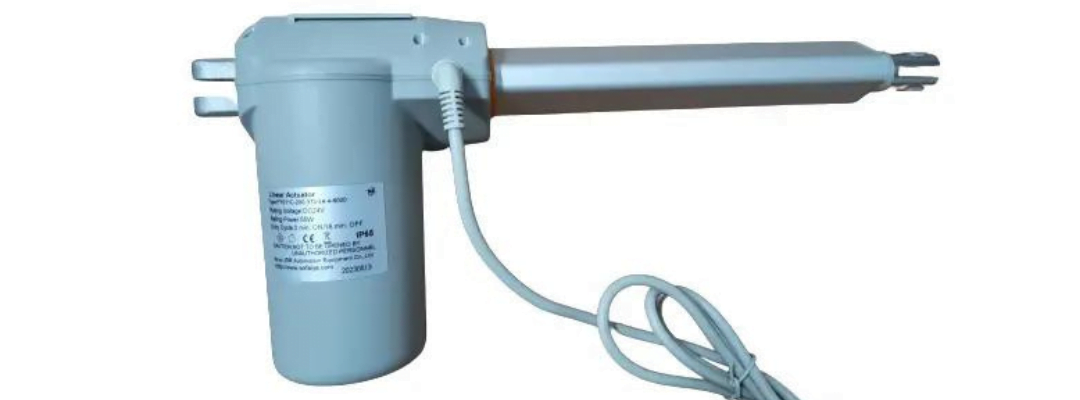Kathir Sudhir Automation is providing The Ultimate Guide to Finding Linear Actuators.
Introduction: Linear actuators are incredible devices that play a crucial role in various industries and applications, from robotics and automation to healthcare and aerospace. If you’re reading this blog, you’ve likely found yourself typing into Google something like “linear actuators” and then thought, “I need more information.” Well, you’ve come to the right place! In this guide, we will explore what linear actuators are, their types, applications, and some important considerations for selecting the perfect linear actuator for your needs. So, let’s dive into the world of linear actuators with “more words.”

What Are Linear Actuators?
Linear actuators are mechanical devices designed to create linear motion, which means they can extend or retract in a straight line. They are essential components in various systems that require controlled linear movement, such as opening and closing doors, adjusting the position of solar panels, and driving the movement of robotic arms. Understanding the different types of linear actuators can help you determine the best fit for your specific project or application.
Types of Linear Actuators
- Electric Linear Actuators: Electric linear actuators use electric motors to convert electrical energy into mechanical motion. They are known for their precision and ease of control. These actuators can be further categorized into ball screw actuators, lead screw actuators, and belt-driven actuators.
- Hydraulic Linear Actuators: These actuators use pressurized hydraulic fluid to create linear motion. They are often employed in heavy-duty applications, like construction equipment and industrial machinery.
- Pneumatic Linear Actuators: Pneumatic actuators utilize compressed air to produce linear motion. They are commonly used in applications that require rapid and powerful movement, such as in the automotive industry.
- Mechanical Linear Actuators: Mechanical linear actuators rely on gears, pulleys, and other mechanical components to generate linear motion. They are simple in design and suitable for various applications.
Applications of Linear Actuators
Linear actuators have a wide range of applications across different industries. Some common uses include:
- Automation: Linear actuators are integral to the automation of various processes, such as conveyor systems, packaging machinery, and CNC machines.
- Healthcare: In the healthcare sector, linear actuators are used in patient lifts, adjustable beds, and medical imaging equipment to provide precise movement and positioning.
- Solar Tracking: Solar panels are often adjusted to maximize sun exposure, and linear actuators are employed to achieve this.
- Robotics: Many robotic systems use linear actuators for precise control of robotic arms and other components.
- Furniture: Adjustable desks, recliners, and hospital beds all make use of linear actuators for effortless position adjustments.
Choosing the Right Linear Actuator
Selecting the right linear actuator for your application is crucial to ensure optimal performance.
- Load Capacity: Determine the weight or force the linear actuator needs to handle to ensure it can perform effectively.
- Speed and Stroke Length: Consider the desired speed and the distance the actuator needs to move (stroke length).
- Control: Think about how you want to control the actuator, whether it’s through simple switches, remote control, or advanced automation systems.
- Environmental Conditions: If your application is exposed to harsh environments, choose an actuator designed for those conditions.
- Power Source: Decide whether you need an electric, hydraulic, or pneumatic actuator based on your power source and specific requirements.
Conclusion
Linear actuators are essential components in a wide array of applications, and finding the right one can be a daunting task. By searching for “more words,” you’ve taken the first step toward understanding the world of linear actuators and how to choose the perfect one for your project. Keep in mind the different types, applications, and key considerations we’ve discussed to make an informed decision. Whether you’re working on a DIY project, designing an industrial automation system, or simply curious about these fascinating devices, the right linear actuator is out there, waiting to make your linear motion dreams come true.


Wow, amazing blog structure! How lengthy have you been blogging for?
you made blogging look easy. The whole look
of your web site is wonderful, as smartly as the content material!